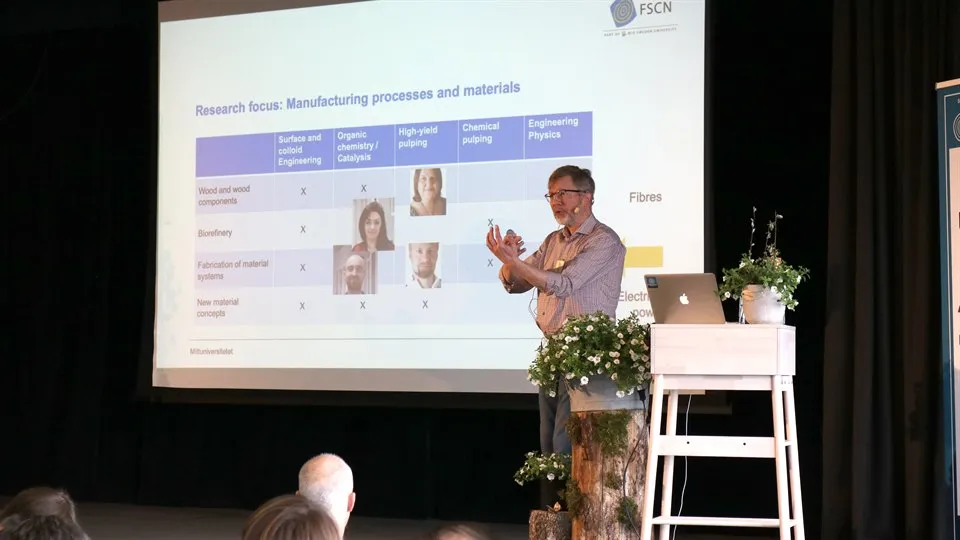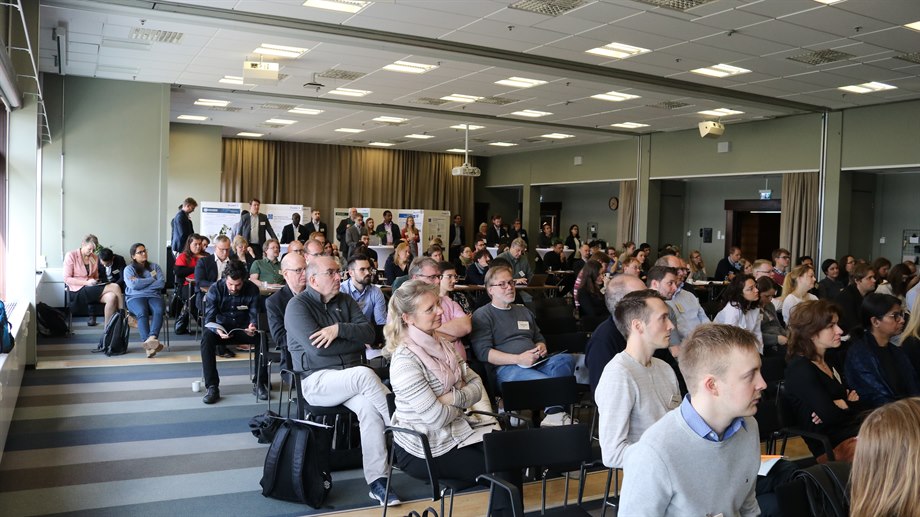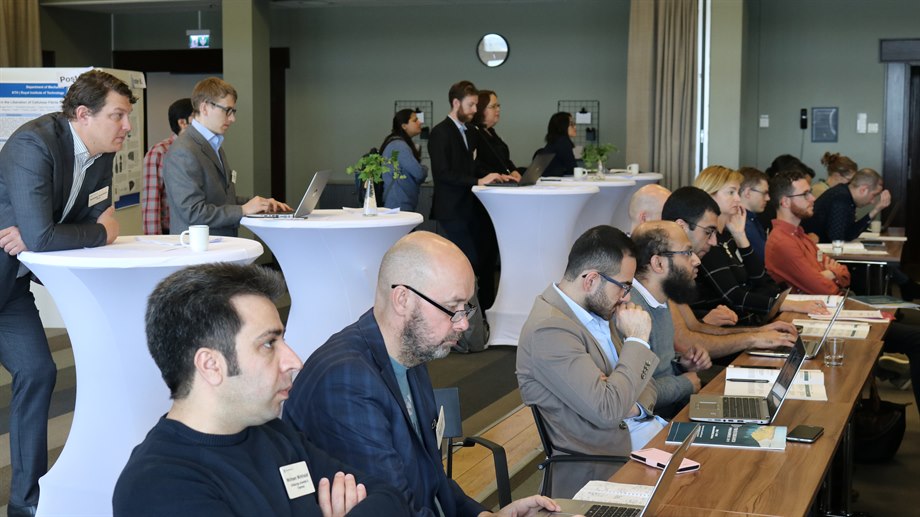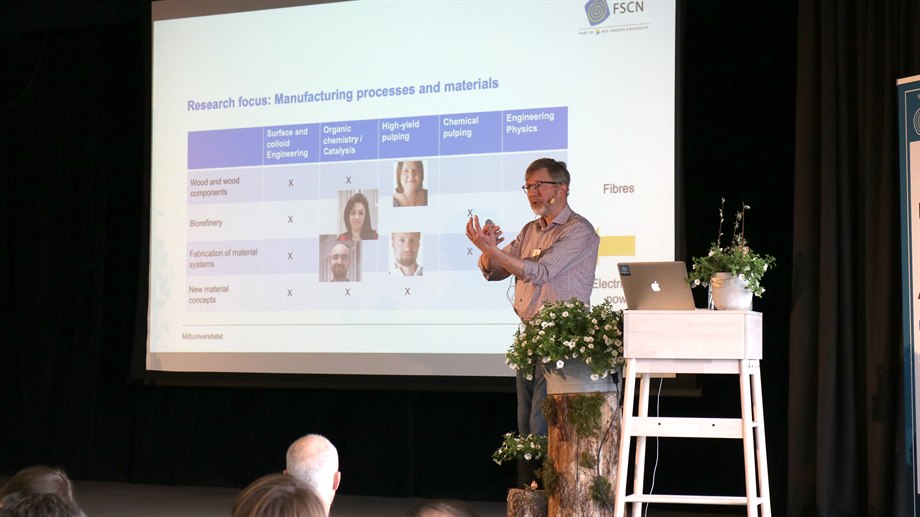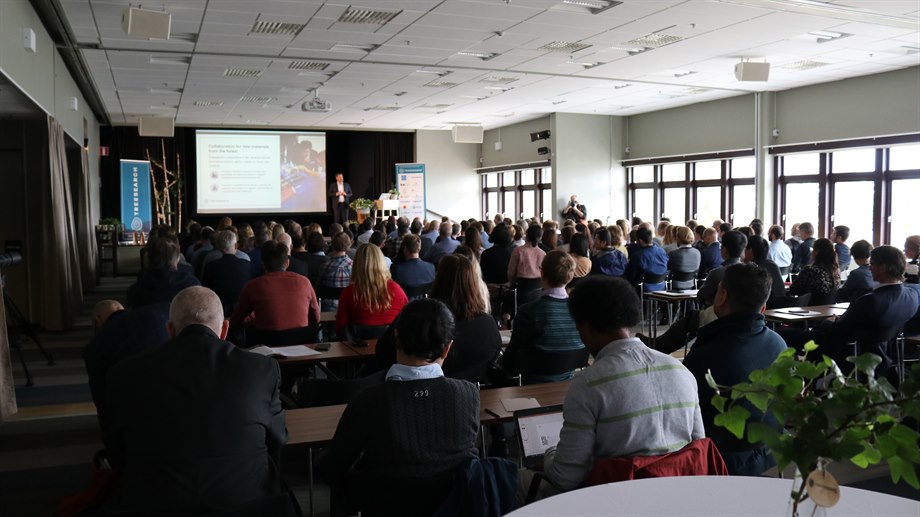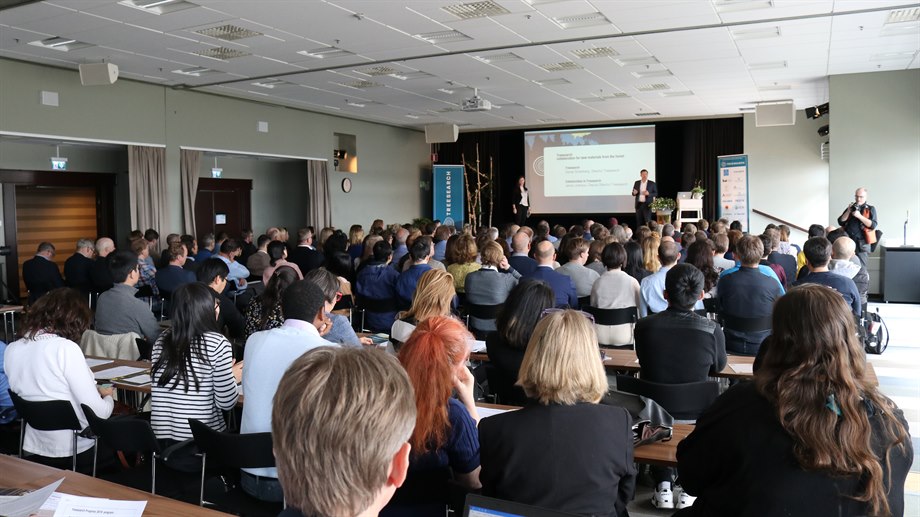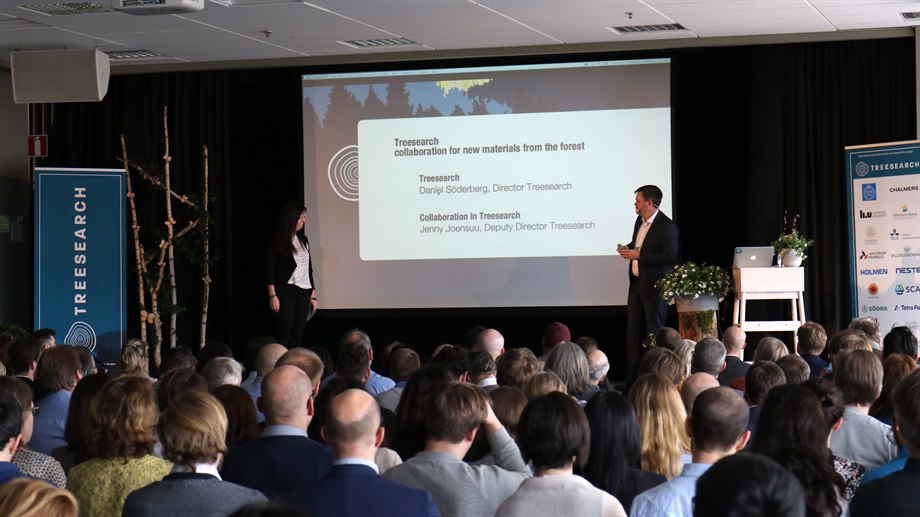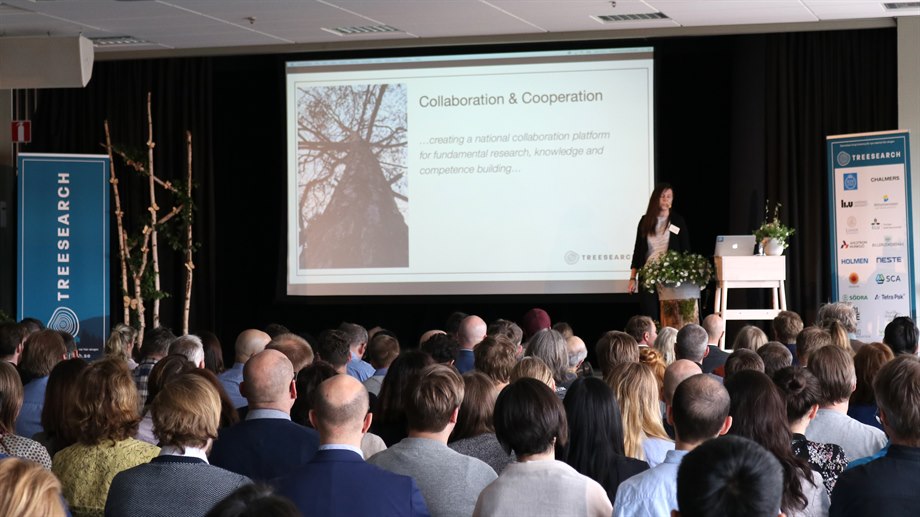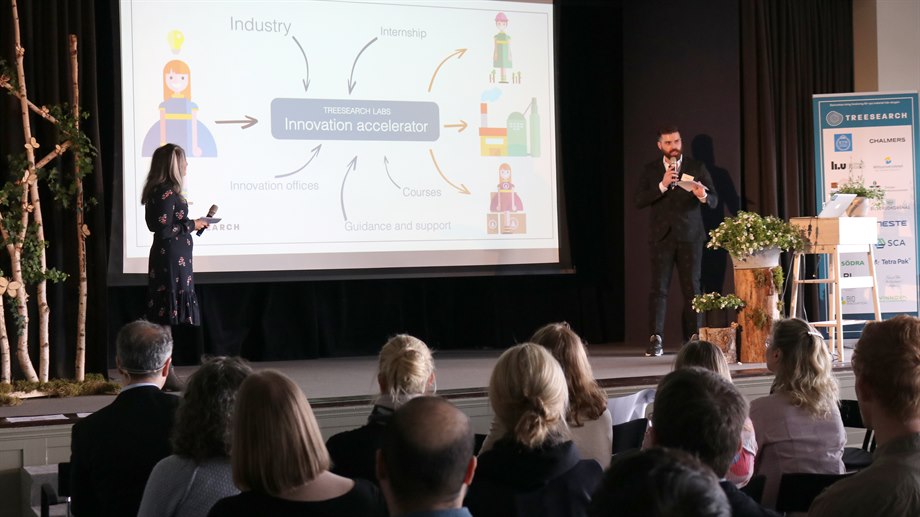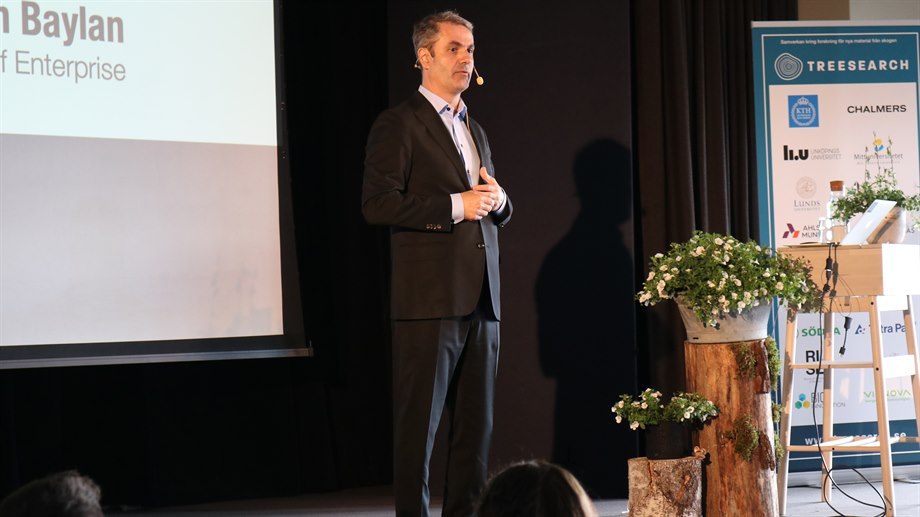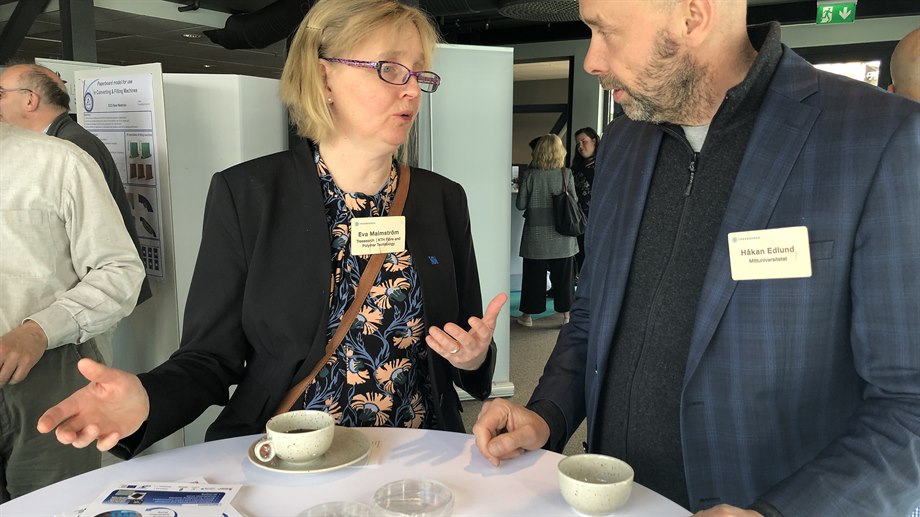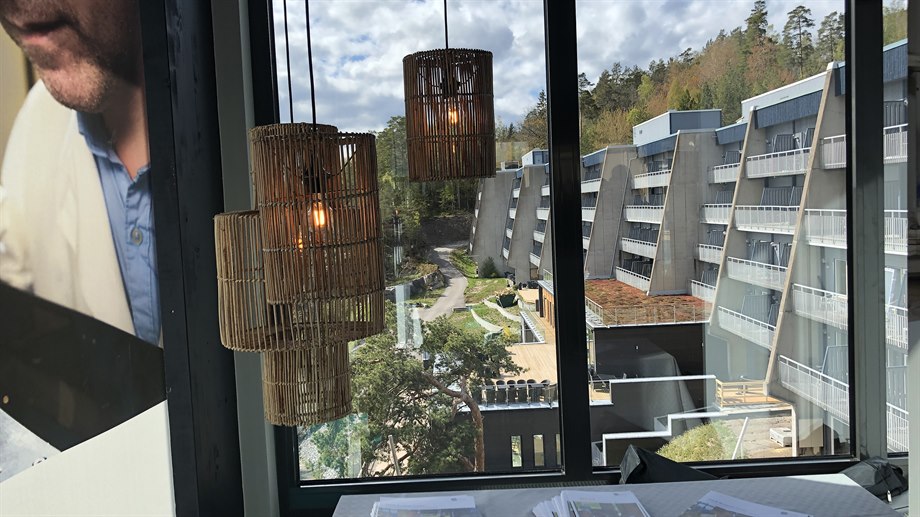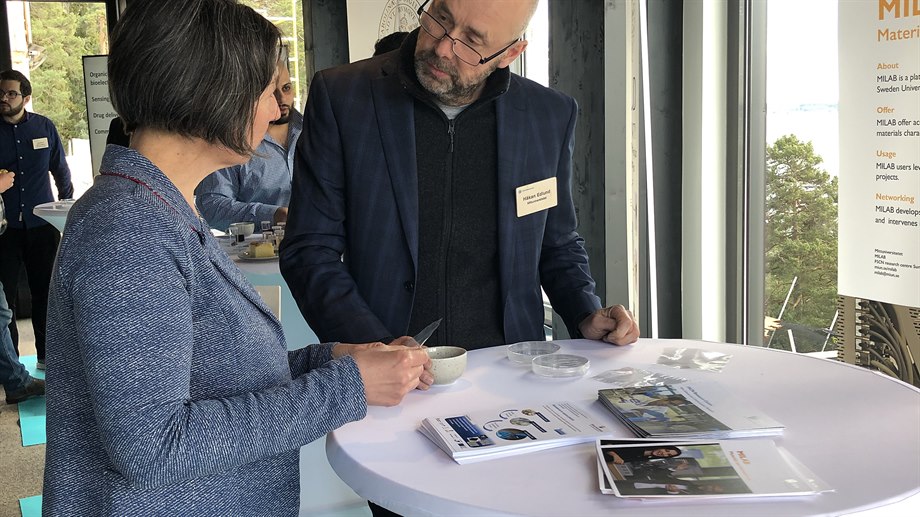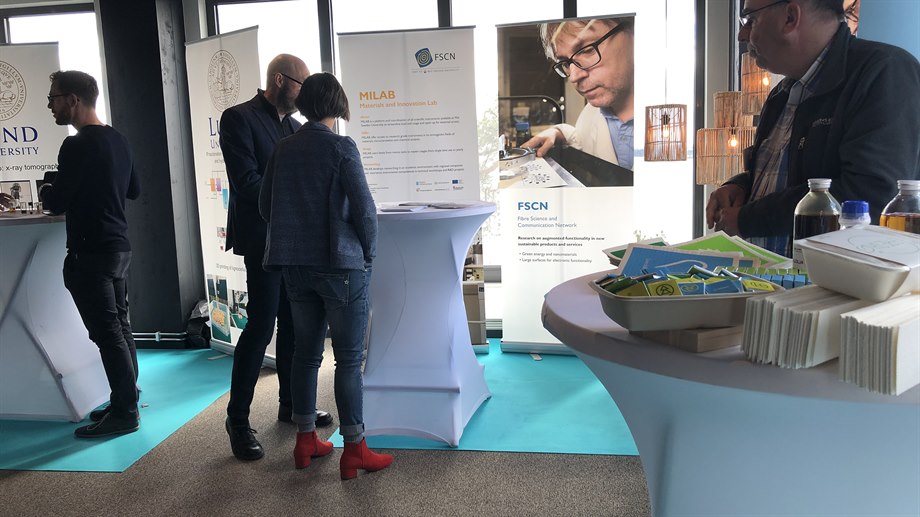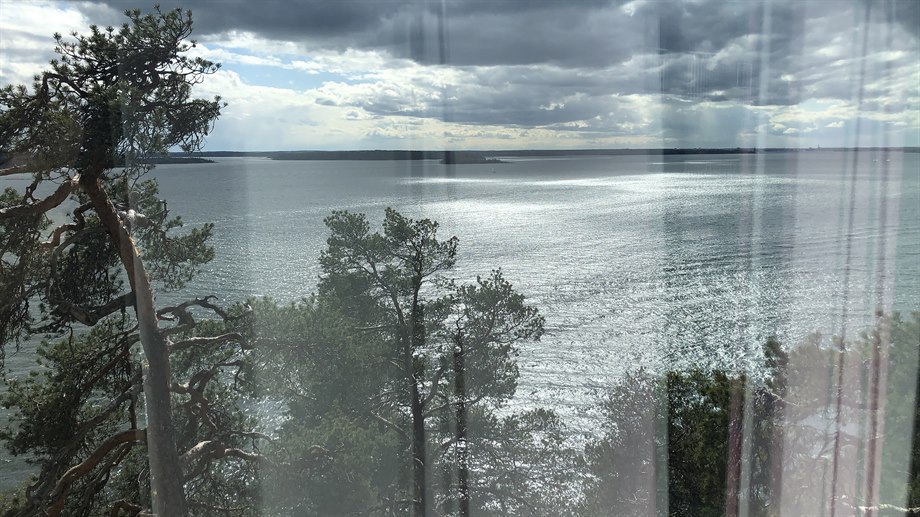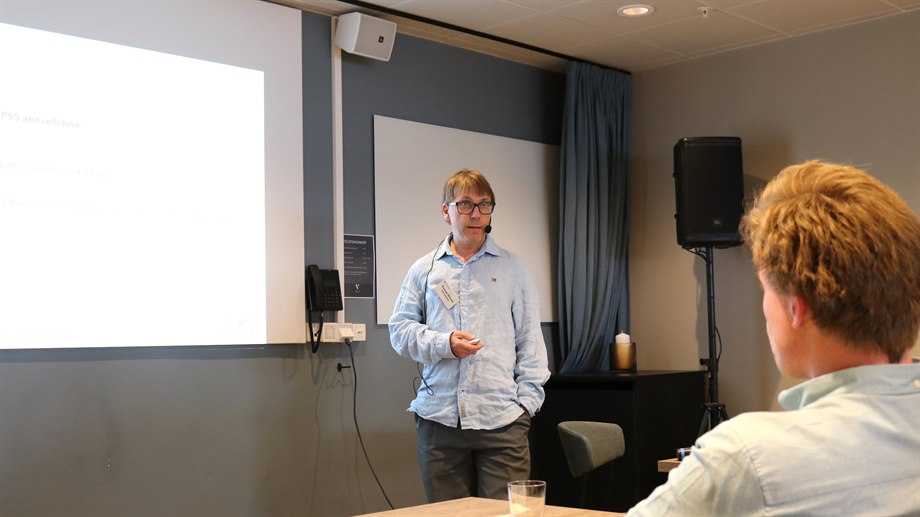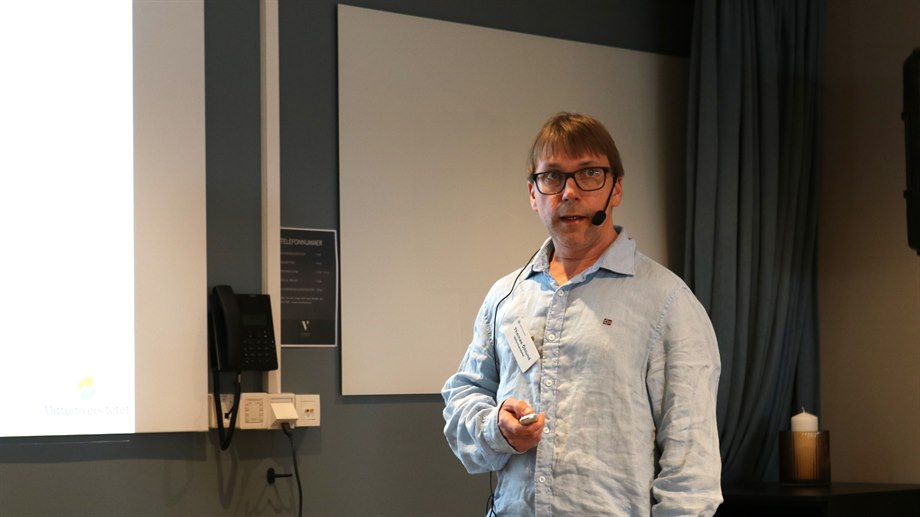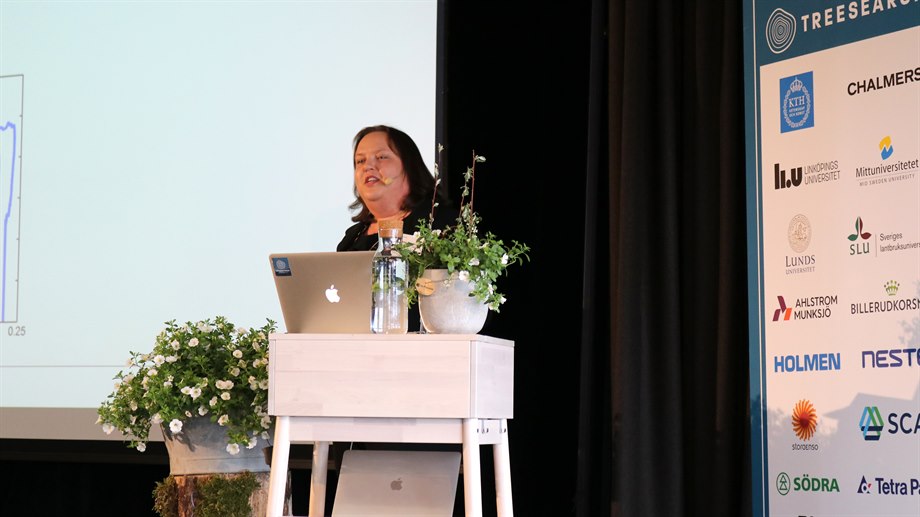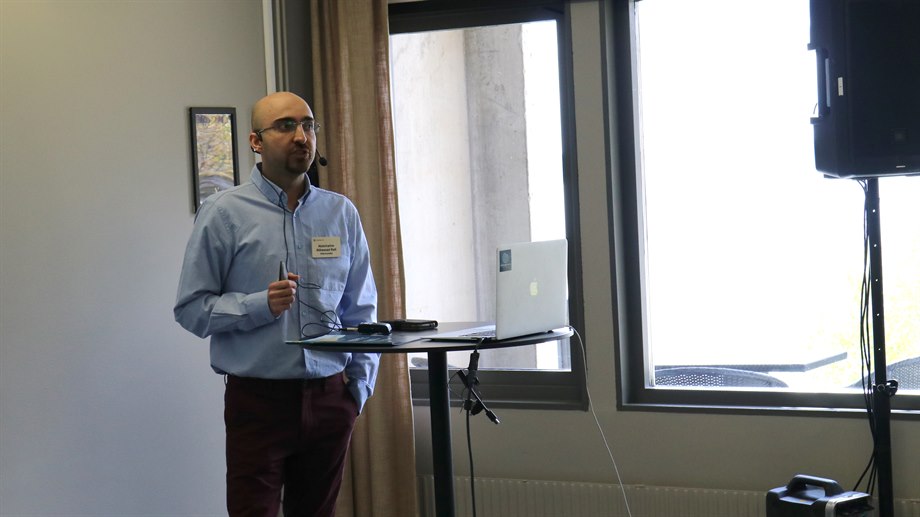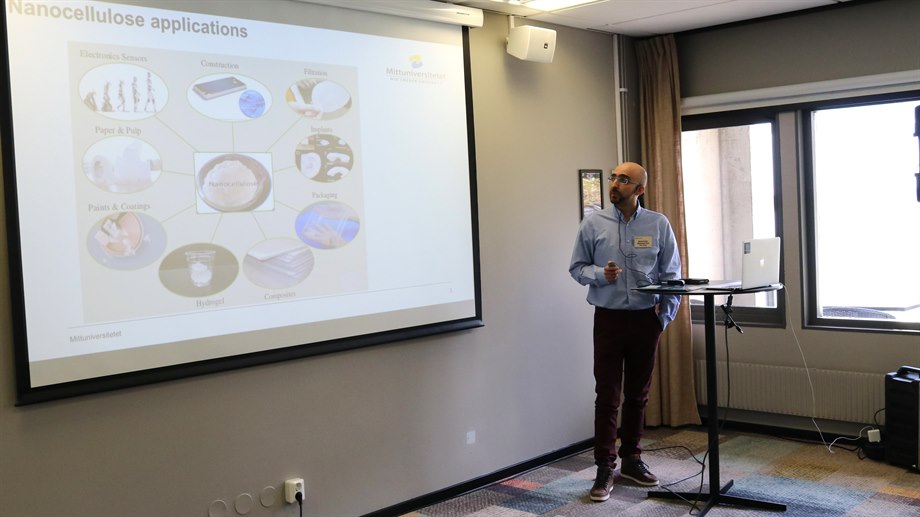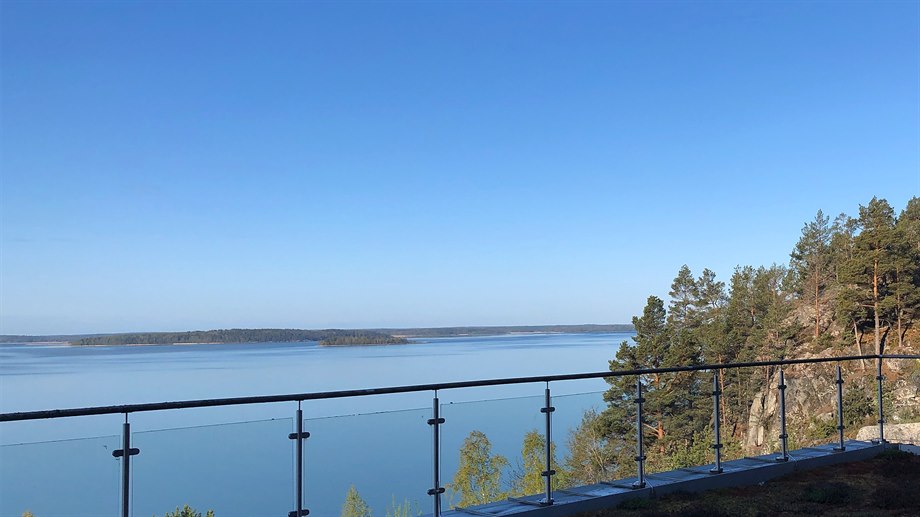av
Treesearch Progress
On May 7-8 2019 we participated in Treesearch Progress at Vildmarkshotellet in Kolmården.
Birgitta Engberg, Kaarlo Niskanen, Thomas Öhlund, Rana Alimohammadzadeh, Armando Cordova, Håkan Edlund and Rahim Rafi presented the research of FSCN and Mid Sweden University in parallel sessions, and participated in the conference.
The conference gathered among 200 persons from academia, industry and funders.
Keynote speakers were Ibrahim Baylan, Minister of Enterprize, Anna Wiberg, Bio Innovation and Sara Mazur Knut and Alice Wallenberg foundation.
Daniel Söderberg and Jenny Joensuu presented the pillars of treesearch and al lot of speakers from the partnercompanies and core partners gave short presentations.
There was also four parallel session with speakers sharing their research results from the academia, in total 44 researchers presented their results with lots of interesting questions and dialogs. 3 of them were from Mid Sweden University:
1. Eco-friendly and innovative catalytic surface modifications of nanocellulose materials
Rana Alimohammadzadeh, PhD student Mid Sweden University
Over the past few decades the market for bio-based products has been extended. The research on the improvement of the properties of cellulose, which is the most abundant organic polymer on earth for making it more compatible as a matrix for various applications is an important research area. The eco-friendly surface modification is not easy and usually requires activated and toxic reagents. Nanocellulose, which can be obtained via chemical or mechanical methods, is an interesting material for use in specific products and applications. An intrinsic challenge is the hydroxy-moietes of the nanocellulose, which make it hydrophilic and renders aggregation. it also contributes as a limiting factor for the nanocellulose to be compatible with other systems. Thus, surface modification will help us to overcome this limitation. Versatile functionalizing nano-fibrillated cellulose (CNF) has been reported. In addition we developed eco-friendly and innovative surface modification of chrystalline nanocellulose (CNC). Catalytic surface modification if CNC resulted in surfaces with contact angles above 150 degrees. Hence the CNC surface became ultra-hydrophobic and could compete with the use of flourocarbon compounds as the modifying agents. In addition our method exhibit high versatility. Oxygen transfer rate (OTR) was measured for modified sample at 23 degrees C and 80 percent relative humidity for 24h. The result revealed 77 percent decreasing of OTR in comparing with the unmodified CNC samples. In addition the catalytic attachment of mercapto compounds enables further surface functionalizing of the nanocellulose with a variety of chemicals via thiol-en click reaction.
2. Sustainable design for direct thia-functionalization of nanocellulosic material
Abdolrahim Abbaszadrafi, PhD student Mid Sweden University
Application of renewable resource becomes more and more important in daily live since they are friendly to nature. Nanocellulose is the natural nanomaterial which can be extracted from native cellulose in nano size in diameter. It has gain highly attraction in both research and industrial area due to its special property such as mechanical property, renewable nature, biodegradable, non toxic and high surface area. Also plenty of hydroxyl groups on nanocellulose help us to modify this unique material. A novel method for modification of polysaccarides based on the combination of organic acid-catalyzed esterification or etherification and photochemical thiol-ene click reaction is reported. One modification if slurry nanocellulose is valuable concept due to the possibility to produce films or use it for coating approach according to specific application.
In this project we have developed the method for direct thiofunctionalizing of slurry nano fibrillated cellulose (CNF) and crystallin nanocellulose (CNC) using thioglycolic acid. Esterification was successfull and it is approved by FT-IR spectra. Degree of substitution (DS) was calculated based on back titration. The reaction was followed by labeling with flourescent materials such as Quinidine and Allyl-TAMRA, to obtain UV active and flourescent biomaterial. CNC foam was functionalized with the same method (CNC-SH) and it was used as reducing agent of cupper in the sharpless click chemistry. Also this material (CNC-SH) was applied as a support for cupper and Pd nanoparticle to be used as a heterogeneous catalyst within the chemical reactions.
3. Highly conductive and stretchable nanocellulose composites
Thomas Öhlund, Dr. Mid Sweden University
Stretchable and electrically conductive nanocellulose composites were developed. A particularly interesting result was that the incorporation of nanocellulose in the composites improved the stretchability and the retention of electrical conductivity during the streching and after relaxation. A stretchability of more than 50 percent was achieved, however with these composites, some constituents had less than ideal biocompatibility. A biodegradable route of electrically conductive biocomposites was explored by the development of nanocellulose composites with a very high cellulose content, that could still retain conductivity. This concept allowed biodegradable and extremely low cost conductive materials. Conductive composites with more than 99 percent cellulose content were demonstrated.
Treesearch is a collaborative platform for research, competence building för new materials from the forest. Treesearch is a national initiative where academia, industry, private foundations and the state create a world leading open research environment for the future bioeconomy.
Treesarch core partners
KTH, Chalmers, Lund University, Linköping University, Mid Sweden University, SLU, Ahlström Munksjö, Billerud Korsnäs, Holmen, Neste, SCA, Stora Enso, Södra, Tetra Pak, RISE, Bio Innovation, Vinnova and Knut and Alice Wallenberg Foundation.
